|
The other day, My classmates and I were invited to see how honey is harvested. Another mentor, Bob, had some neat tools to help get the honey out of the hive. Here is a look at the process of harvesting honey. You can click on the small photos to make them larger. Tools of the HarvestBob, knew what to expect so he put a large tarp down so that we wouldn't make such a sticky mess. Here are some photos of the tools we used. We had a large plastic tub with a grate in it to uncap the honey. All of the cappings would fall into the tub and any honey would fall through the grate. After uncapping honey we could put the frame in the buckets or use an extractor to get the honey out. The buckets have a nylon strainer so that only honey will pass through it. Taking off the CapsThe first part of honey harvest is bringing in the frames that are capped and filled with honey. To avoid bringing the bees in with the super box, you can brush them off with your bee brush, use a smelly fume board, or even use a leaf blower. If you are gentle, you can use any of these methods to get the bees out of the supers. Once you have your frames of honey, you will uncap the honey. When bees make honey the right consistency (not too watery) they will put a wax cap on it to preserve the honey. We used a hot knife to slice off the caps. It actually melted the wax so it was really easy to slice through the wax caps., but If that doesn't uncap all the honey comb, then you can use a capping scratcher or a fork to open the rest of the comb caps. As, you can see in the photo's the knife doesn't really look sharp, but it was hot. The scratcher is the teal tool in the middle. Extracting the HoneyNow for the really fun part. After taking the caps off you put the frames into an extractor. The extractor will spin the honey out of the frame. If you took a wet towel and spun it around as fast as you could some of the water would fling out of the towel. The extractor works the same way. While you spin out the honey you can see it fling up against the walls of the machine. It oozes down and then comes out the bottom. Then you have honey. We strained it as it dripped into the bucket and then we had a taste test. Lots of sticky goodness. Tasting the Harvest
0 Comments
Today I met with Cathy, another new beekeeper, to help remove a colony of bees from a house. Our mentor Sonny taught us what to do when moving bees from a naturally built hive to your own hive. Cathy had heard about these bees from a friend and offered to remove them for free. She got to keep the bees, and the owner paid for any repairs needed to the home when we were finished. Click on any of the photos to make them larger. The first step is to find the bees. They were coming out of the door frame with lots of pollen. The more pollen bees bring in the more babies there are. We went down to the basement to see if we could find them there. Cathy and Sonny decided to cut through the ceiling to find them. The next step is getting them out. We cut out the comb with a small knife and sucked up some bees with a special vacuum. In the photo below, Cathy and Sonny are setting up the vacuum. The hose is attached to a box for the bees. There is a smaller screened box inside the one with the three small holes. To get the right amount of suction we can cover one of the holes up to change the pressure. This is important so we don't harm the bees. When we have cut off a portion of the comb we must tie it to a frame. Beekeepers use frames to hold honeycomb so it is easier to check, maintain, and extract the honey. After the comb is tied in we put it in the first box of our Langstroth hive. Sonny and Cathy decided to split the hive so Cathy took the comb and frames and Sonny took the bees that were vacuumed up. Cathy left the Langstroth hive, with the frames of comb, near the entrance of the old hive spot so that the worker bees would find their new home when they came back from foraging. A day or so later Cathy came back to take her hive home. Sonny was able to take his bees home the same day in the special screened vacuum box.
Pollen comes from many different sources and comes in many different colors. Bees travel to different flowers to gather nectar an pollen. They store what they bring home in the comb. In this frame you can see a variety of colors in the comb. You can use a chart to figure out where these bees foraged or gathered this pollen. The queen bee likes the darkness of the hive, so sometimes it is hard to find her. I have looked every time that I checked on my bees and hadn't seen her yet. Today was my lucky day. I pulled out frame after frame searching for pollen, nectar, brood, and of course, Miss Royalty. I knew she would be deep in the hive. She was probably laying eggs. I found a few frames full of brood (baby bees). I knew I was getting closer. Then I spotted her. I yelled for T.J. to come and look and a few other beekeepers came to see her too. T.J. snapped a photo and her she is. Can you find which one is the Queen? She has a long abdomen. It is not time to start harvesting honey yet, but It is still pretty interesting. My friend Evan sent me a message by using the ask a beekeeper part of this website. If anyone has a question let me know and I'll do my best to answer it. Evan wrote: "I would like to know how you get honey out of a hive" I'll post photos and explain more about how it works when its time to harvest the honey, but here is a short answer:
Here is a short video of a beekeeper harvesting honey:Film by Tiger in a Jar February was coming to an end and I was off to a new adventure. My Husband and I headed to the County Extension Office to pick up the wood, frames, and wax to build the hive. When we arrived we saw lines of hives waiting to be picked up by my classmates. Students crowded into a small room to learn how to put the frames together. The frames hold a wax sheet that the bees will use as a foundation for building cells. We needed to insert the wax into the frames and nail down a strip of wood so the wax stays put in the frame. We also learned that we needed to weatherproof our wooden hive by sealing it with paint. This will protect the inside of the hive from moisture. We loaded the car and drove off with the scent of beeswax in the air.
A few weeks later, I finished up with painting. |
AmandaStaring at the dancing bees in an observation hive, it hits me. I love how these tiny creatures communicate. It looks like they're having fun dancing around while telling their sisters where to find some nectar. Amanda's Sting Count
2013- 6 stings 2019- 0 Archives
April 2019
Index
All
|
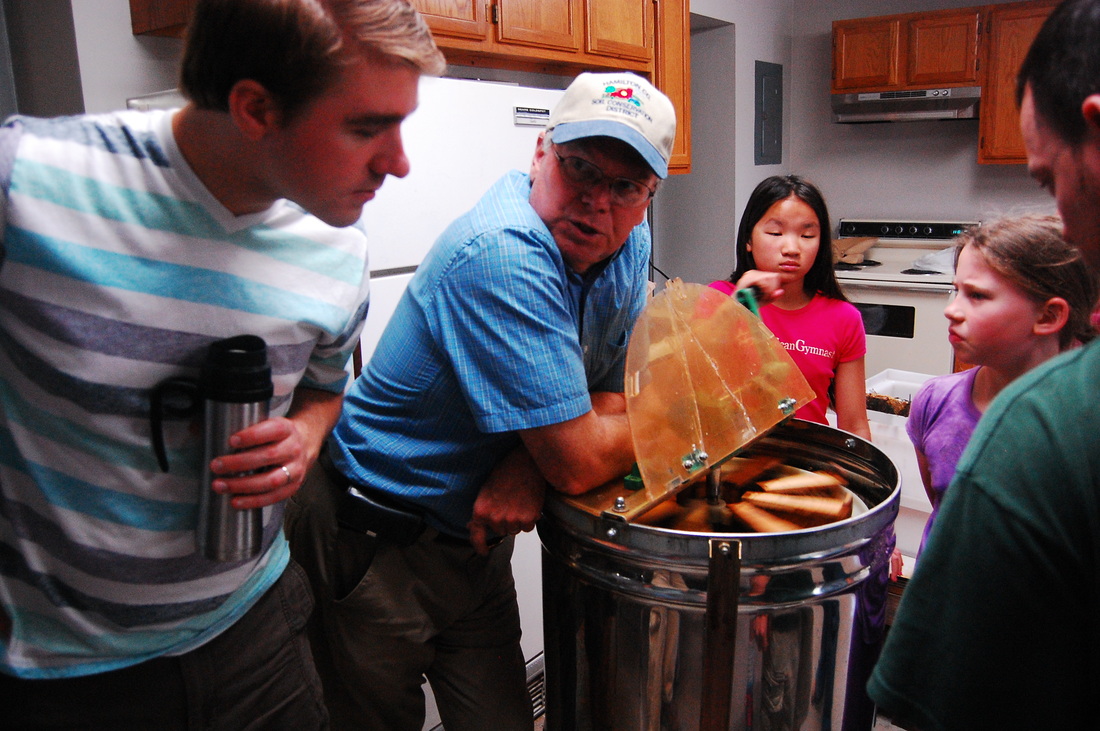
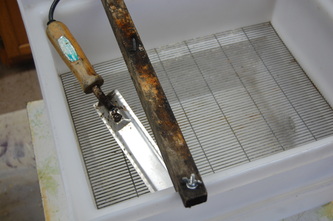
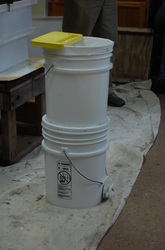
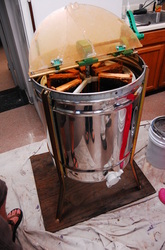
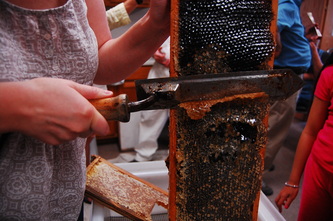
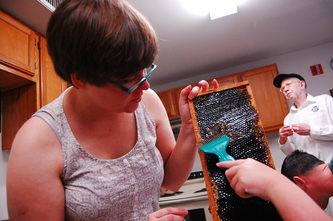
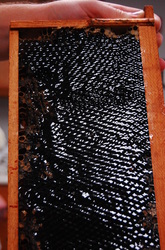
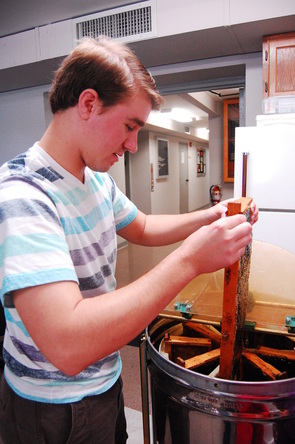
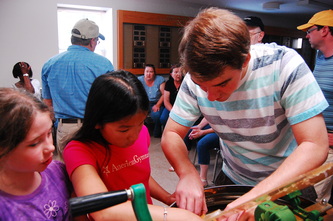
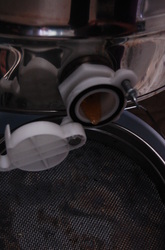
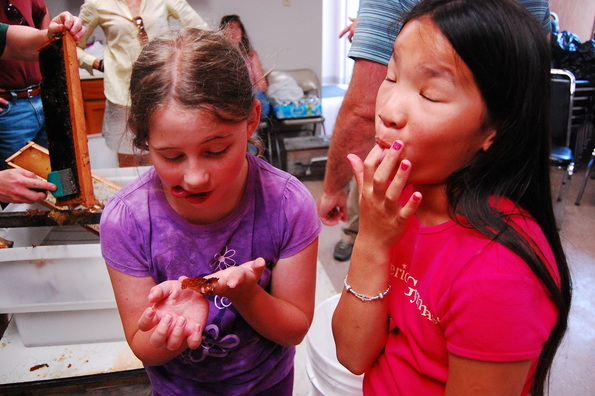
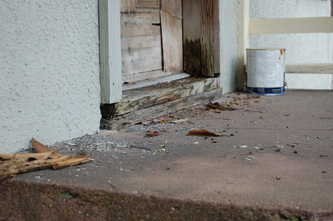
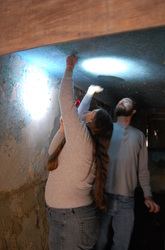
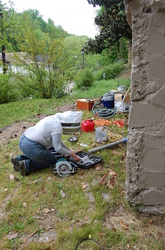
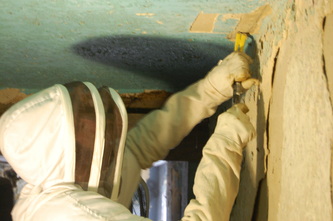
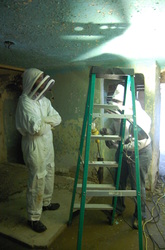
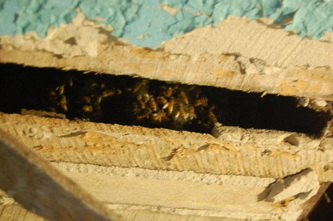
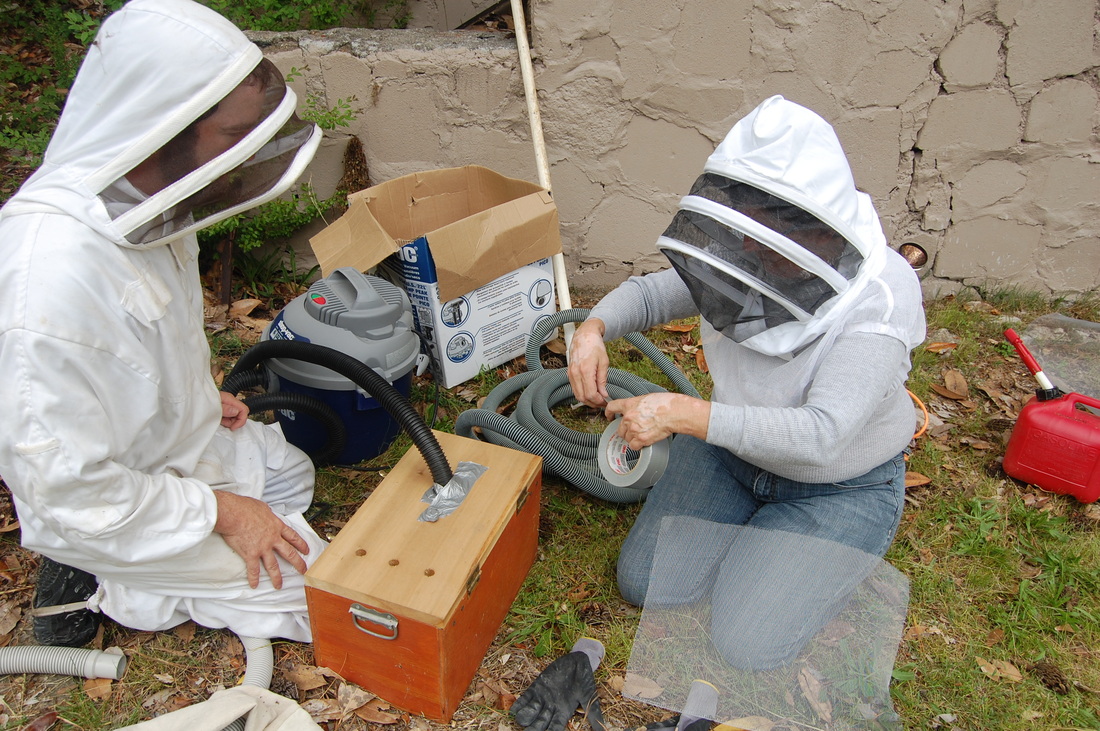
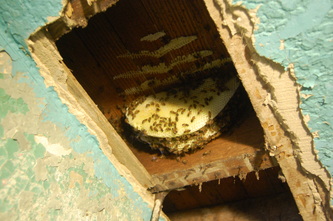
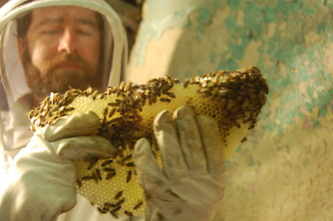
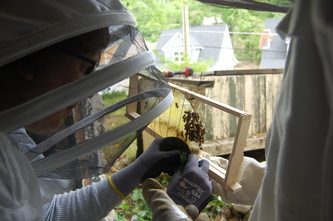
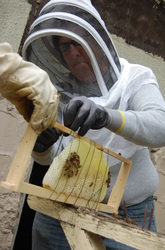
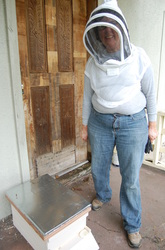
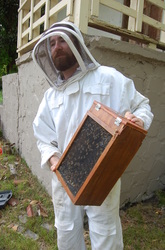
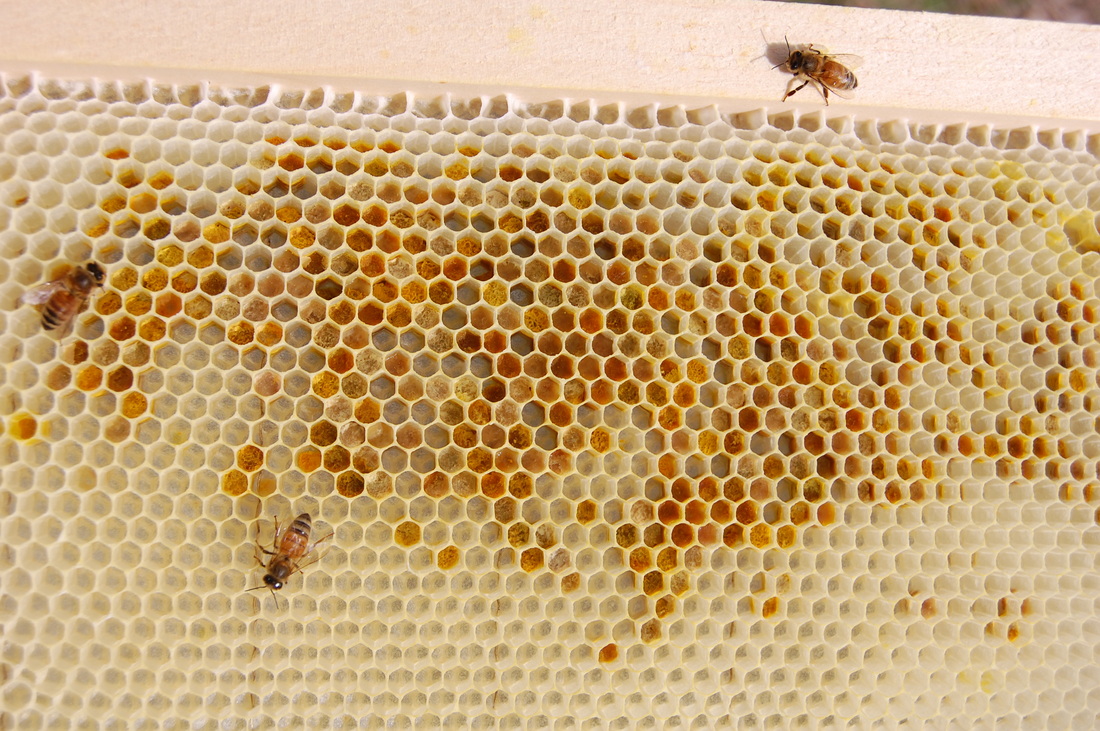
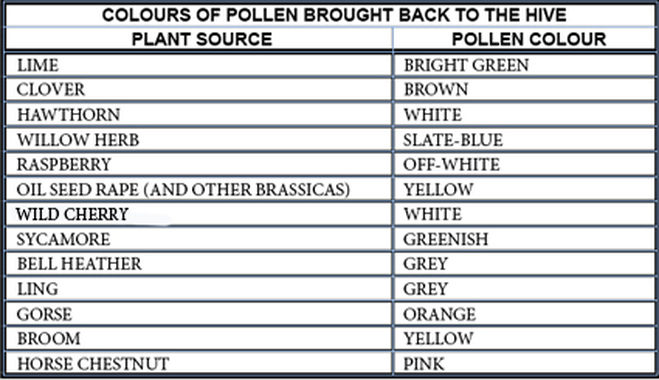
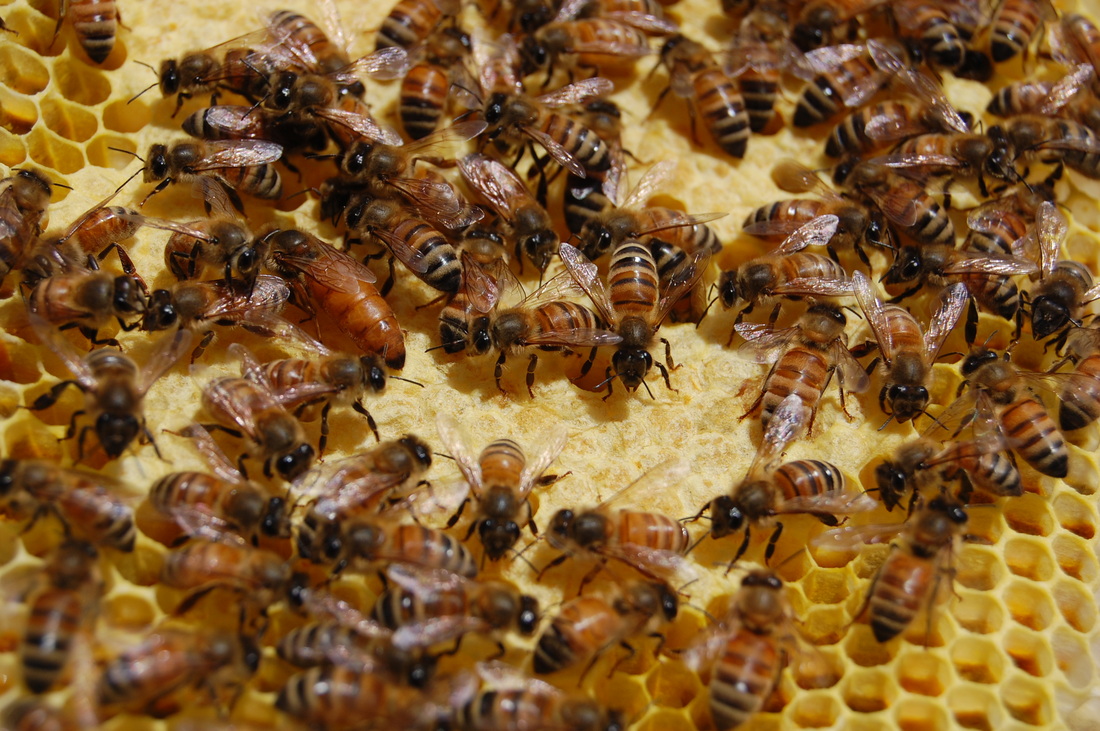
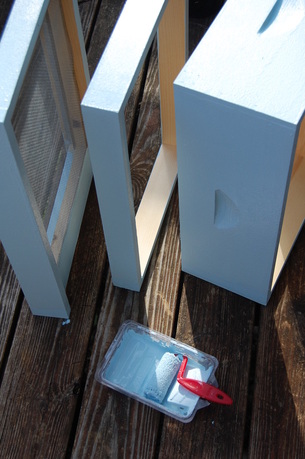
 RSS Feed
RSS Feed
